We are fascinated by the ruins of previous civilizations and the mysteries they hold. They remind us of our own tenuous grasp on history and our shared search, with men and women of all ages, to discover the meaning of life, the existence of God, and how we should live upon this earth.
In the little town of San Pablo Villa de Mitla in southern Oaxaca is one of Mexico’s most interesting pre-Columbian archaeological sites. Built and inhabited by the Zapotecs somewhere between 200 and 900 AD, the Mitla temple complex served as a center for worship and a burial place for nobility. Mitla was conquered by the Aztecs around the time of Columbus’ voyage to the New World. The Aztecs liked putting their own name on things and renamed this place from the Zapotec “Lyobaa” (place of burial) to “Mitla” (Aztec for place of the dead). The Mitla complex contains several tombs accessible only through narrow, subterranean passages.
Cortez arrived in present-day Mexico City on November 8, 1519 and soon subdued the Aztecs, thus beginning the Spanish colonial era. During this period, the Catholic church sent cadres of priests to Mexico and embarked on a massive construction effort, building schools, hospitals and churches across the country. The beautiful, domed Mitla Catholic church is typical, built high on a hill overlooking the town, and in the the very midst of the old Zapotec ruins.
Saturday was a beautiful day for sightseeing, so I wandered the ruins taking photos. (Which reminds me. A good blogging friend of mine, whose nom de plume is Skye Puppy, has been writing a very excellent series lately on techniques for improving your photographs. I highly recommend it and was keeping some of her advice in mind as I took these photos.)
I hope you enjoy this brief tour of Mexican history and culture.
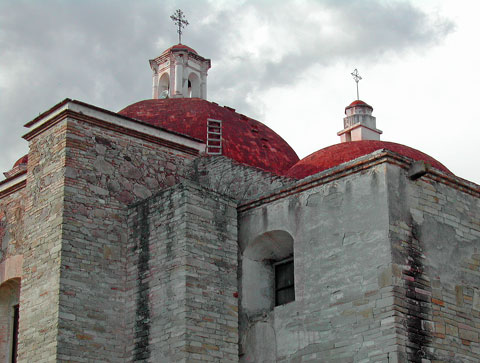
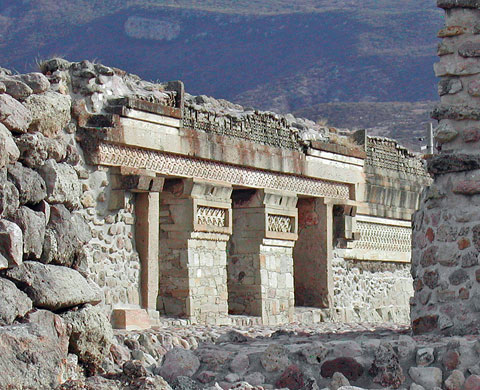
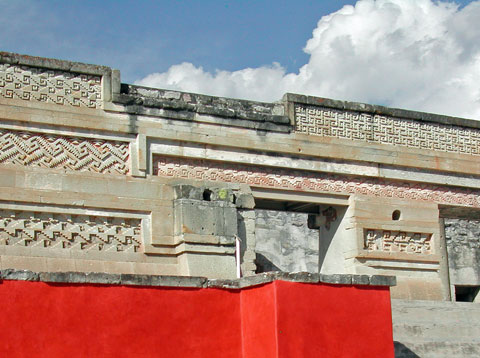
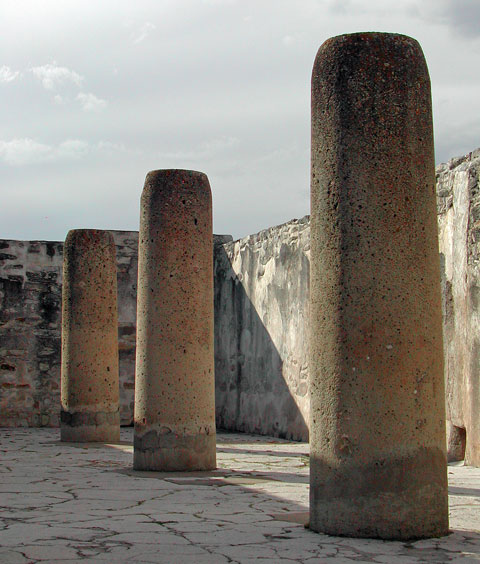
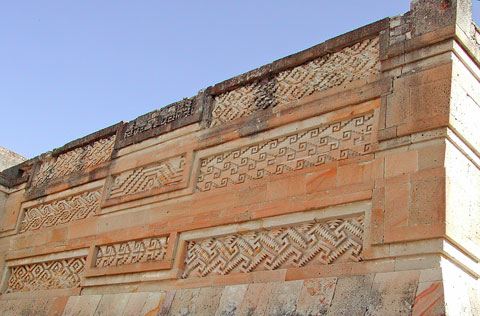
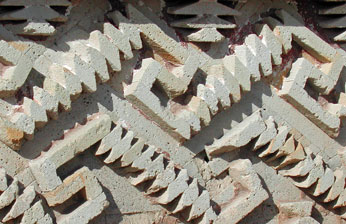



Beautiful sights. Thanks for sharing them.